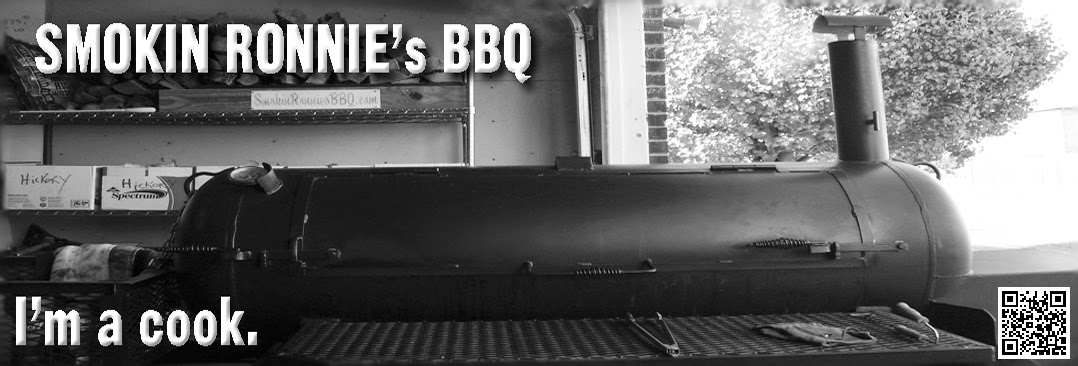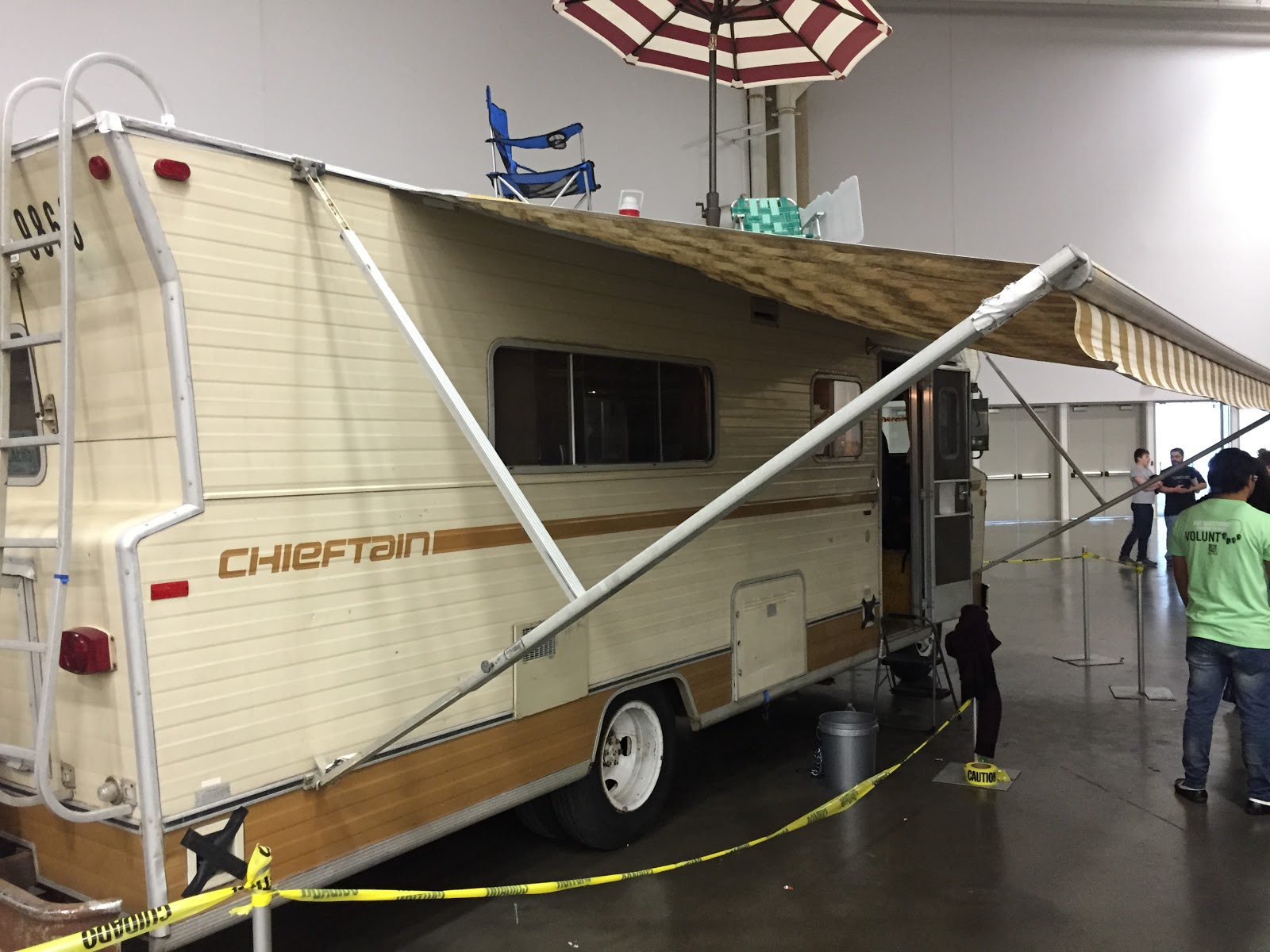Tuesday, March 31, 2015
Friday, March 27, 2015
Tuesday, March 24, 2015
Thursday, March 19, 2015
TBT/ 1st Cook @Assembly of God Function Little Elm Park 2008
Bosco and Katie.
Had a hungry visitor at 3:00 am.
My 1st selfie.
Had a great time, made some new friends and learned many lessons about having your own business. Learn by doing is always the best way.
Tuesday, March 17, 2015
Aaron Franklins "The Specialists" from Lucky Peach magazine...
http://luckypeach.com/got-moxie/
A day in the life of Aaron Franklin "Franklin BBQ".
A day in the life of Aaron Franklin "Franklin BBQ".
Aaron Franklin is a wood whisperer. He doesn’t have the multigenerational brisket-cooking lineage that his peers in the Hill Country do, but he has a savant-like aptitude for smoking meat. I listened to him talk himself breathless choosing the right log for the fire, and came to understand why people wait for his barbecue in lines so long that a lawn-chair-rental cottage business has sprung up. —Chris Ying
Saturday morning, 12:45 a.m.: I walk in the door. Braun, the night guy, is probably still here—he won’t leave until maybe one thirty or two. I check the briskets that are already starting to come off. Those briskets went on about ten a.m. the day before, and starting at about midnight, they’ll start coming off and may rest for three hours before they’re actually at an edible temperature of 145 degrees.
Saturday’s the biggest day of the week for barbecuing. Yesterday, we had about 1,700 pounds of meat, which is about the most we’ve ever cooked for a day. That was too much; it was a little too hard to pull it off. Our beef comes from up in Kansas where there’s a handful of ranches we get stuff from. Marbling fluctuates quite a bit throughout the year. Right now the briskets that we’re getting are a result of nice weather at the beginning of summer. So they’re bigger, they’ve got a little more marbling. Then a bit after winter, the flats’ll be really thin. There’ll be a lot of subcutaneous fat but maybe not a lot of marbling. If there’s a drought, that affects our meat. Corn prices affect everything. We source the most consistent stuff I can get at a lot of volume, which right now is about 30,000 to 35,000 pounds a month. We could get better stuff but we wouldn’t be able to get enough of it.
1:15 a.m.: After checking the briskets, I’ll light the fire on no. 2, then I’ll make an espresso and turn on some music—I normally start with something soft, something soothing; it is pretty early. Lately, Tortoise has been kinda high on the list. I’m looking to get beef ribs on the first cooker between 2:00 and 2:05 a.m. It’s gonna take me exactly thirty minutes to rub them down and get them on. That gives me about fifteen or twenty minutes to have some coffee, make the rib rubs, get my knives together, and get set up for doing all these ribs. I start rubbing beef ribs at one thirty, they go on at two, and then I’ll get the next fire going.
3:00 a.m.: Music’s going, starting to feel pretty okay. Cursing a lot still because it’s very early. I come back outside, get the fires going on the three big smokers. My first batch of spareribs goes on MC5—named after the band—which is the farthest big cooker from the kitchen. It’s twenty and a half feet long. It takes thirty minutes to warm these things up, so I’ll get MC5 going, then come in and rub down some ribs. At 3:29 on the dot, I’m running out the door, loading up Rusty Shackleford. On my way back in, I’ll check the fire on the beef ribs, maintaining that at 300 degrees. Then Muchacho goes on at 3:41. I’m pretty down to the minute. I don’t think anybody else has one eye on the clock all the time. I’m within three minutes up or down, no matter what day it is.
3:51 a.m.: I’ll just kinda watch the fires for about thirty minutes. This means running around in a circle because once one’s going up, the other’s down, and you’ve gotta get ’em all synced up. It’s five fires you’re maintaining within 5 degrees—I cook all of them at slightly different temperatures because of the way the wind hits certain ones. One doesn’t convect quite the same as the others, but it gets really smoky, so I’ll burn a faster, hotter fire. But another one convects a little bit too much, so I’ll build a slower fire. And 300 degrees isn’t necessarily the same all year round. Like, in the winter, I may set it at 305, 310 for ribs. But when it’s really, really hot, I probably back off to about 275 and get the same result.
My wood selection might be a little bit different for each cooker, too. Right now, it’s really hot outside and we’re burning live oak because it has more sugar and it’s a much denser wood, so that’ll give us a higher smoke-to-heat ratio, as opposed to post oak. When I’m choosing a piece of wood, I’ll walk through a whole cord of wood and be like, I need something about this big and I need it pretty dense and I need it straight so it fits in that little spot I’ve got on my coal bed. Once I find the right piece, I’ll throw it in the fire, grab a shovel, and rake the coals a little bit. If I need a little bit of air, I’ll maybe trench it down the middle. I’m not necessarily looking for high flames. I want kinda-low flames but a lot of heat going through, so I may take a curvy piece and just lay it up on the coal bed and it’ll just hang out. Eventually it’ll catch and I’ll shove it forward and I’ll start another one. I probably read into fires way too much. Or maybe not enough.
5:00 a.m.: Smoker no. 1 fires up at about five o’clock to get turkeys on at five thirty. When the turkeys are coming off, sausage goes on for lunch. As sausage gets wrapped up for lunch, then pork butts will go on.
6:00 a.m.: I don’t really look at the ribs much for the first couple hours. If it starts cooking too hot, you can sniff and say, “Oh, this cooker is too hot,” and run over there. Or you can take a peek and be like, Oh, they’re cooking too fast. If the edges are getting a little darker, you might need a little more airflow in there. If they’re kinda splotchy, you’re like, I forgot to check the water pan. That’s what this whole thing’s about. You do the same thing every day, and you know exactly what they should look like.
You can put anything on a brisket or on a rack of ribs, but how well can you work a fire? It’s like a dude that’s doing sushi: he just has a feel for it. It’s the same thing with this, except there’s a ton of variables: the kind of cookers or how somebody’s building a fire. If something’s sitting on a fire for twelve hours, that fire—and how well it was managed—is gonna determine how it tastes. If it’s not hot enough, it might be really fatty; it might not have rendered properly. If it was too hot, it may have seared on the outside, may be dry, may be uneven.
6:25 a.m.: I should be wrapping ribs in foil. They should have more than enough smoke at that point if I did the fires right. You try to time these things, but sometimes if there’s wind coming from this way, then everything changes so then I might wrap this smoker’s ribs first, go down there, wrap that one, and then wrap this one last. One’ll get wrapped second even though it went on first, but it might change one day if something’s cooking too fast or getting colored too quick. I’ll slow it down and let it kinda trail off a little bit, or maybe I’ll burn a cleaner fire just to give it more cook time and less smoke.
The rest of the day: I have work to do until about four or five in the evening. At that point, I’ve caught my fifteenth wind. If I go to sleep, I’m going to wake up at two in the morning and I don’t have to get up until seven tomorrow, so I’m going to try to push it as long as I can. I’ll probably go to sleep at nine, ten o’clock, on the early side.
I really don’t know what the endgame is with all this. This thing’s gotten a lot bigger than we ever thought it would. I can’t imagine ever selling and retiring and just letting someone else take it, because we’ve worked awfully hard on this. Maybe someday we’ll just close it when we get too old and frail. Maybe we’ll have kids who want it. Maybe if somebody’s around here for a long time and really deserves it, we’ll just give it to them. I know we’re not going to ever franchise or have multiple locations. That will not happen. There’s no way.
Briskets: I can cut a brisket open, and I can tell who trimmed it, who rubbed it, who did the first half of the cook, and who finished it. I can also tell who put it up in the warmer. Everybody’s got a little bit of a different style. I can tell if my nighttime guy’s knife was kind of dull—the brisket’s got some jagged ends, little bits that aren’t real smooth. I can tell who did the front half by the way the fire was managed, whether there’s good smoke formation. I can tell who rubbed it. If I’m doing it, I’ve got a really, really distinct style. I can tell if it’s somebody else. Maybe it’s a little splotchy, maybe the salt-to-pepper ratio is different. I keep two and a half holes on the top of the shaker cracked open. (I don’t like fresh-ground pepper, by the way. It’s too strong.) Then there are different styles of wrapping. One guy sets his two sheets of paper a little too far apart. One guy overlaps about six to seven inches and then wraps them. I do mine in a “V” shape.
Aaron Franklin.
I've read almost every word that has been written about Aaron or that Aaron himself has wrote, and this article is by far the best.
Aaron Franklin @GettinSauced 2011 Austin Tx.
Monday, March 16, 2015
Monday, March 2, 2015
Subscribe to:
Posts (Atom)





































